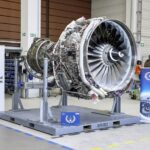The global aircraft de-icing market size is projected to grow from $1.24 billion in 2024 to $1.83 billion by 2031 at a CAGR of 5% during the forecast period, according to a new report by Coherent Market Insights.
The growth of air traffic and stringent safety regulations mandating de-icing before take-off are the primary drivers fueling the growth. Additionally, the increasing incidences of flight delays and cancellations due to icy conditions further boost the demand for efficient de-icing services in the aviation industry.
One key trend shaping the aircraft de-icing market is the adoption of advanced de-icing technologies such as infrared heating and electro-mechanical systems, which offer faster and more eco-friendly de-icing solutions. Another trend is the rising investments in research and development activities to develop innovative de-icing fluids that are more effective and environmentally sustainable. These trends are expected to drive the growth of the market in the coming years.
With the rapid growth of the commercial aviation industry, there is a significant increase in the demand for aircraft de-icing solutions. This is mainly due to the need to ensure the safety and efficiency of flights during adverse weather conditions such as snow and ice. Airlines are investing in advanced de-icing methods and equipment to comply with safety regulations and reduce delays and cancellations caused by winter weather. As a result, the market for aircraft de-icing is expected to witness substantial growth in the coming years.
One of the emerging trends in the aircraft de-icing market is the adoption of infrared heating technology as a method for de-icing aircraft. This innovative technology offers faster and more efficient de-icing compared to traditional methods, such as chemical de-icing and spray de-icing. Infrared heating technology also reduces the use of chemicals and fluids, making it a more environmentally friendly option for aircraft de-icing.
Subscribe to the FINN weekly newsletter

